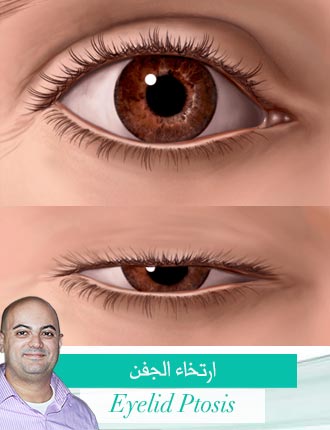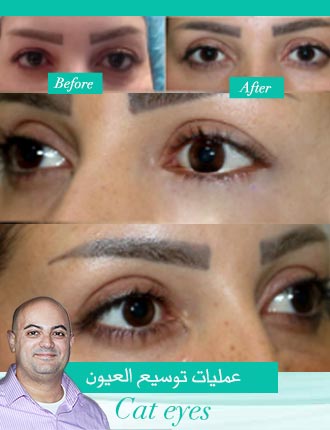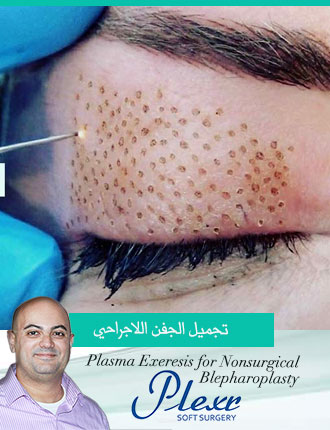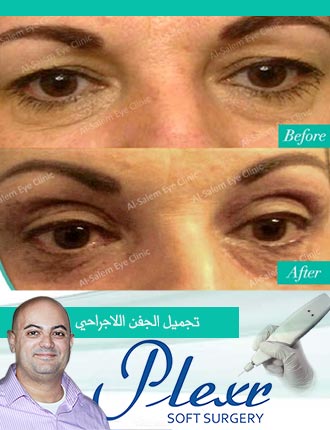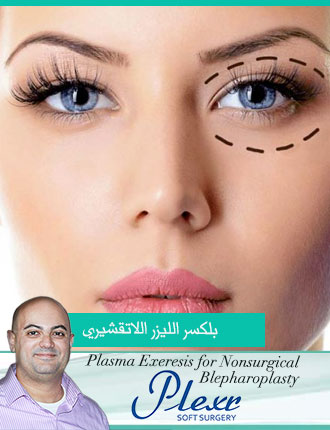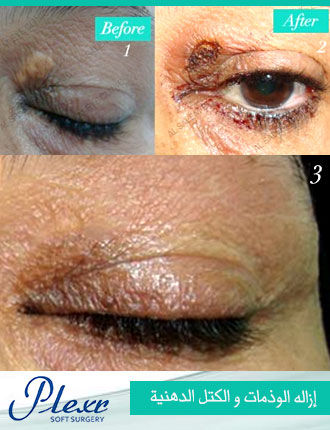Ptosis surgery; achieve your best results. Written by Khalil Al-Salem M.D FRCS, FICO
Ptosis or upper eyelid drooping describes an eyelid covering more than a sixth of the eye, The eyelid may droop just a little or so much that it covers the pupil (the black dot at the center of your eye that lets light in), droopy eyelids can limit or even completely block normal vision. Herein, we will discuss the types of Droopy lids and how we treat Ptosis in various age groups.
Droopy eyelid in children
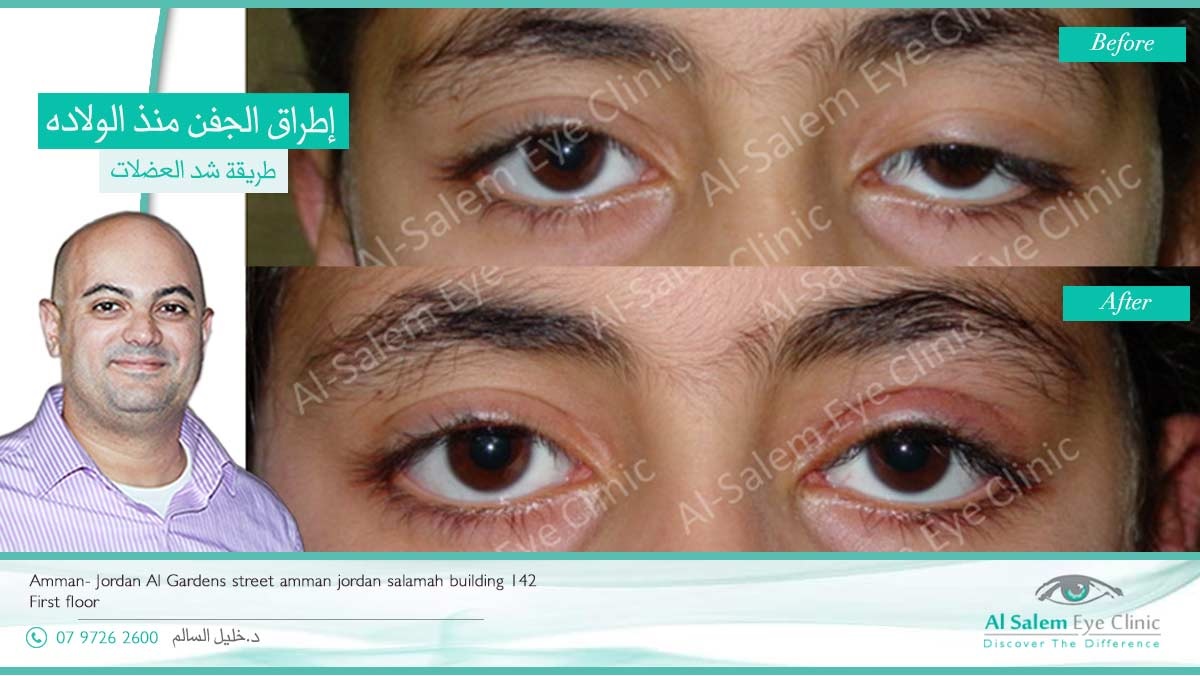
Children born with Ptosis have what is called congenital Ptosis. This can be caused by problems with the muscle that lifts the eyelid (called the levator muscle).
The most apparent sign of Ptosis is a drooping eyelid. Another sign is when the upper eyelid creases do not line up evenly with one another. A child with Droopy lids may tip their head back, lift their chin, or raise their eyebrows to see better. Over time, these movements can cause head and neck problems.
Sometimes, a child born with Ptosis can also have other eye-related problems. They can include eye movement issues, eye muscle disease, tumors (on the eyelid or elsewhere), and other issues.
Having Ptosis puts a child at risk for vision problems. If the child’s eyelid droops so much that it blocks vision, amblyopia (also called “lazy eye”) can develop. One eye will have better vision than the other. A child with Ptosis can also have astigmatism, where they see blurry images. The child may also develop misaligned (crossed) eyes.
Droopy eyelid in adults
Adults get Ptosis (called involutional Ptosis) when the levator muscle stretches or separates away from their eyelid. This can be caused by aging or an eye injury. Sometimes Ptosis happens as a side effect after specific eye surgeries. Rarely, diseases or tumors can affect the eyelid muscle, causing Ptosis.
Your eye doctor will find the cause of your Ptosis to recommend treatment. They will do a complete eye exam and want you to have blood tests, X-rays, or other tests. The ophthalmologist will likely recommend surgery to help the eyelid muscle work better.
Droopy eyelid treatment for children
Ophthalmologists consider the following factors when deciding the best way to treat Ptosis in children. The first is the child’s age, does the child has one or both eyelids affected, and the most important; the strength of the eyelid’s muscle, the eye’s movements, and height.
In most cases, eye doctors recommend surgery to treat Ptosis in children. Droopy eyelid surgery either tightens the levator muscle or attaches the eyelid to other muscles to lift the eyelid like those found in the forehead. The goal of treatment is to improve vision.
If the child also has amblyopia, amblyopia should have a priority after surgery. Amblyopia is treated by patching the eye with better vision along with adequate correction of refractive error.
All children with Ptosis—whether or not they have surgery—should regularly see their ophthalmologist for eye exams. Ask your child’s ophthalmologist; how often exams are needed. Because kids’ eyes grow and change shape, they need to be checked for amblyopia, refractive disorders, and other eye problems.
Adult Ptosis surgery
Ptosis surgery is done as an outpatient procedure in your ophthalmologist’s office. Local anesthesia will be used to numb your eye and the area around it.
Sometimes, the surgeon may only need to make a small adjustment to the lid’s lifting muscle. Extra skin from the eyelid also may be removed to help the eyelid lift properly. For more severe Ptosis, the levator muscle may need to be strengthened and reattached to the eyelid.
As with any surgery, there are possible risks and complications with droopy eyelid repair. Your ophthalmologist will discuss these with you.
Before eyelid surgery, be sure to tell your ophthalmologist about all the medicines you take. Include all prescription and over-the-counter medications, vitamins, and supplements. Your eye surgeon needs to know if you take aspirin (or aspirin-containing drugs) or blood thinners or have a bleeding problem.
 تخطي إلى المحتوى
تخطي إلى المحتوى




